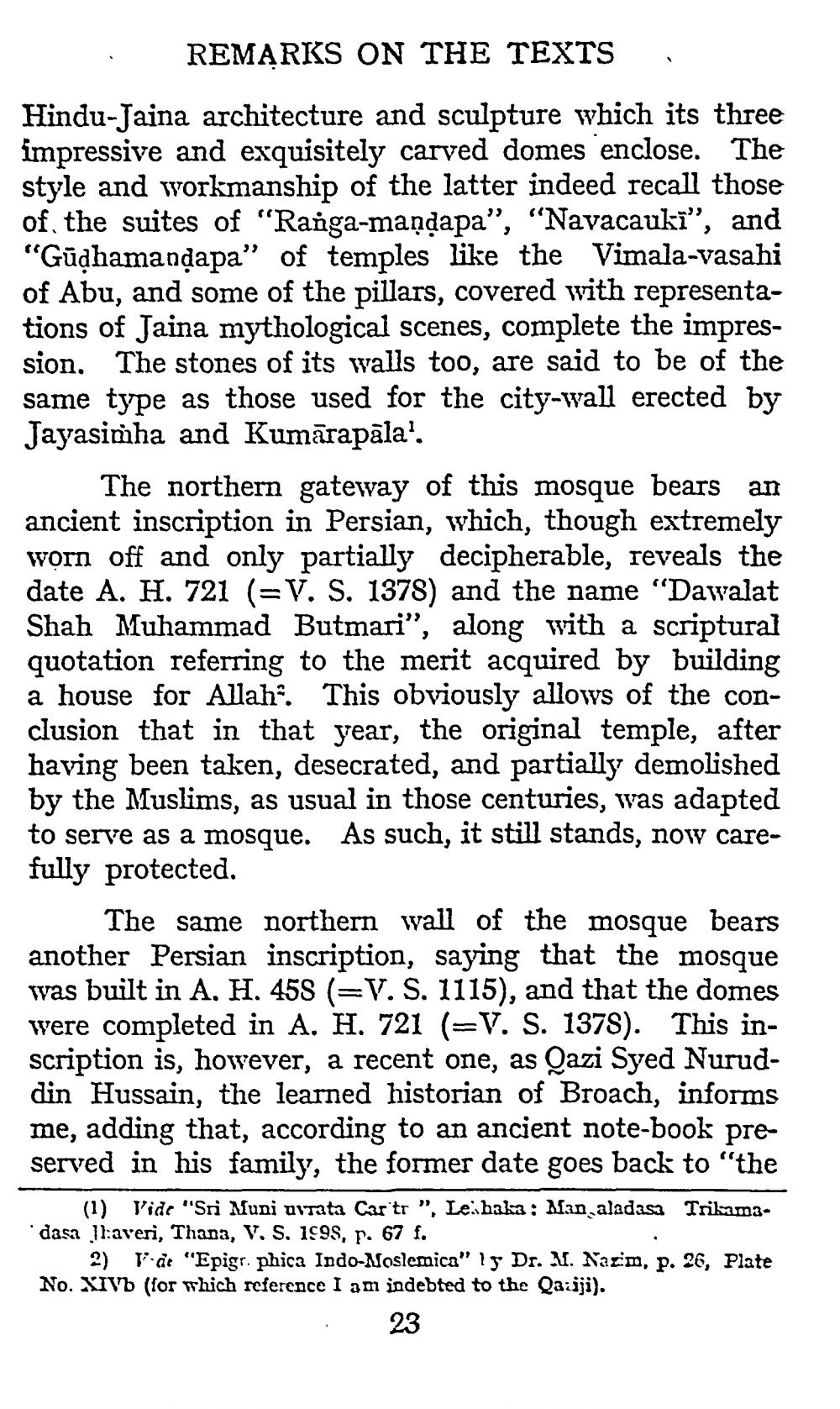________________
REMARKS ON THE TEXTS
Hindu-Jaina architecture and sculpture which its three impressive and exquisitely carved domes enclose. The style and workmanship of the latter indeed recall those of the suites of "Ranga-maņdapa”, “Navacauki", and "Gūdhamanďapa" of temples like the Vimala-vasahi of Abu, and some of the pillars, covered with representations of Jaina mythological scenes, complete the impression. The stones of its walls too, are said to be of the same type as those used for the city-wall erected by Jayasimha and Kumārapāla'.
The northern gateway of this mosque bears an ancient inscription in Persian, which, though extremely worn off and only partially decipherable, reveals the date A. H. 721 (=V. S. 1378) and the name "Dawalat Shah Muhammad Butmari", along with a scriptural quotation referring to the merit acquired by building a house for Allah. This obviously allows of the conclusion that in that year, the original temple, after having been taken, desecrated, and partially demolished by the Muslims, as usual in those centuries, was adapted to serve as a mosque. As such, it still stands, now carefully protected.
The same northern wall of the mosque bears another Persian inscription, saying that the mosque was built in A. H. 458 (=V. S. 1115), and that the domes were completed in A. H. 721 (=V. S. 1378). This inscription is, however, a recent one, as Qazi Syed Nuruddin Hussain, the learned historian of Broach, informs me, adding that, according to an ancient note-book preserved in his family, the former date goes back to "the
(1) Vide "Sri Muni uvrata Cartr ", Leibaka : Man aladasa Trikamadasa llaveri, Thana, V. S. 1998, p. 67 f.
2) Pide "Epigr. phica Indo-Moslemica" 15 Dr. U. Nacim, p. 26, Plate No. XIVb (for which reference I am indebted to the Qaijji).
23




